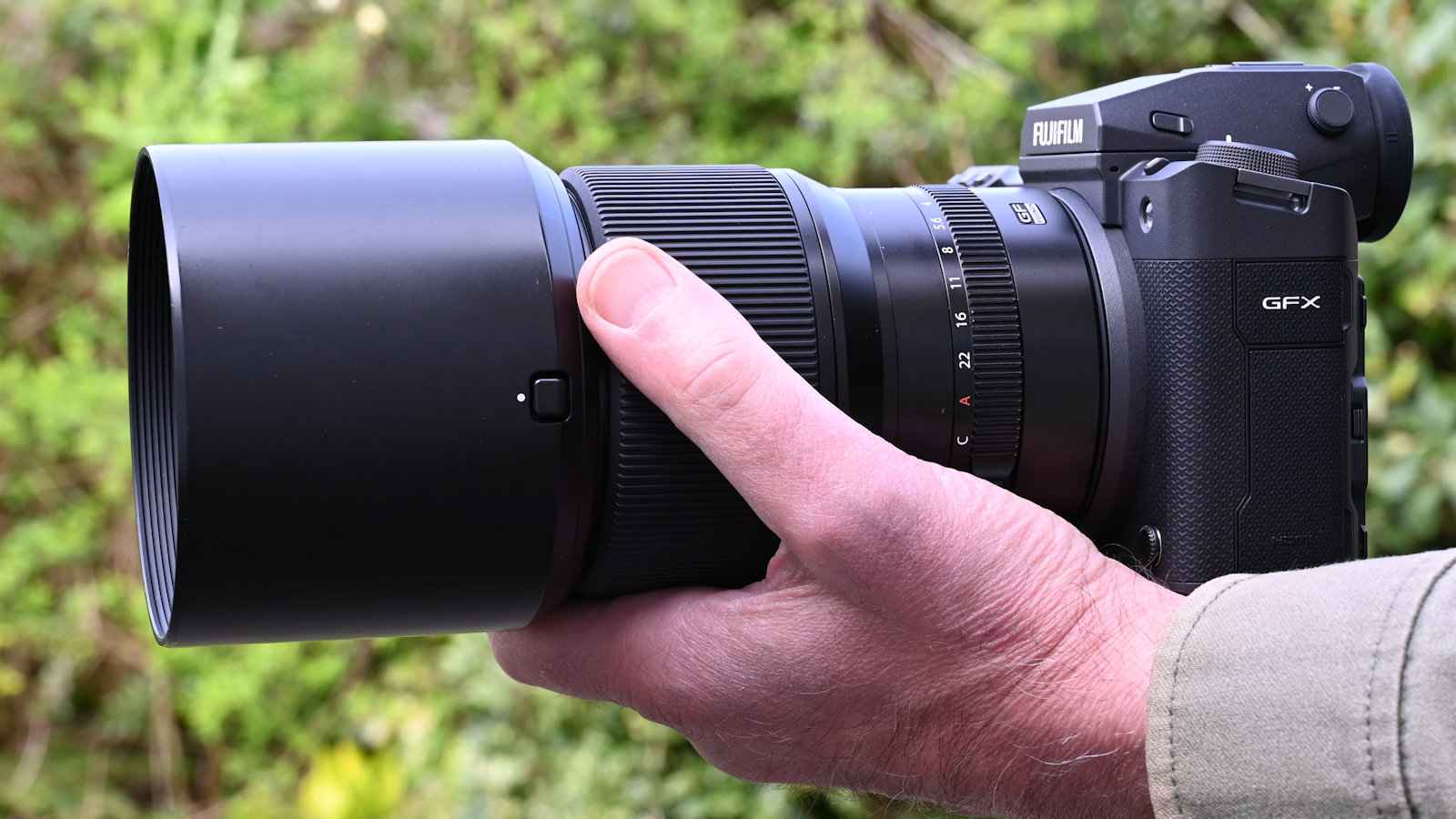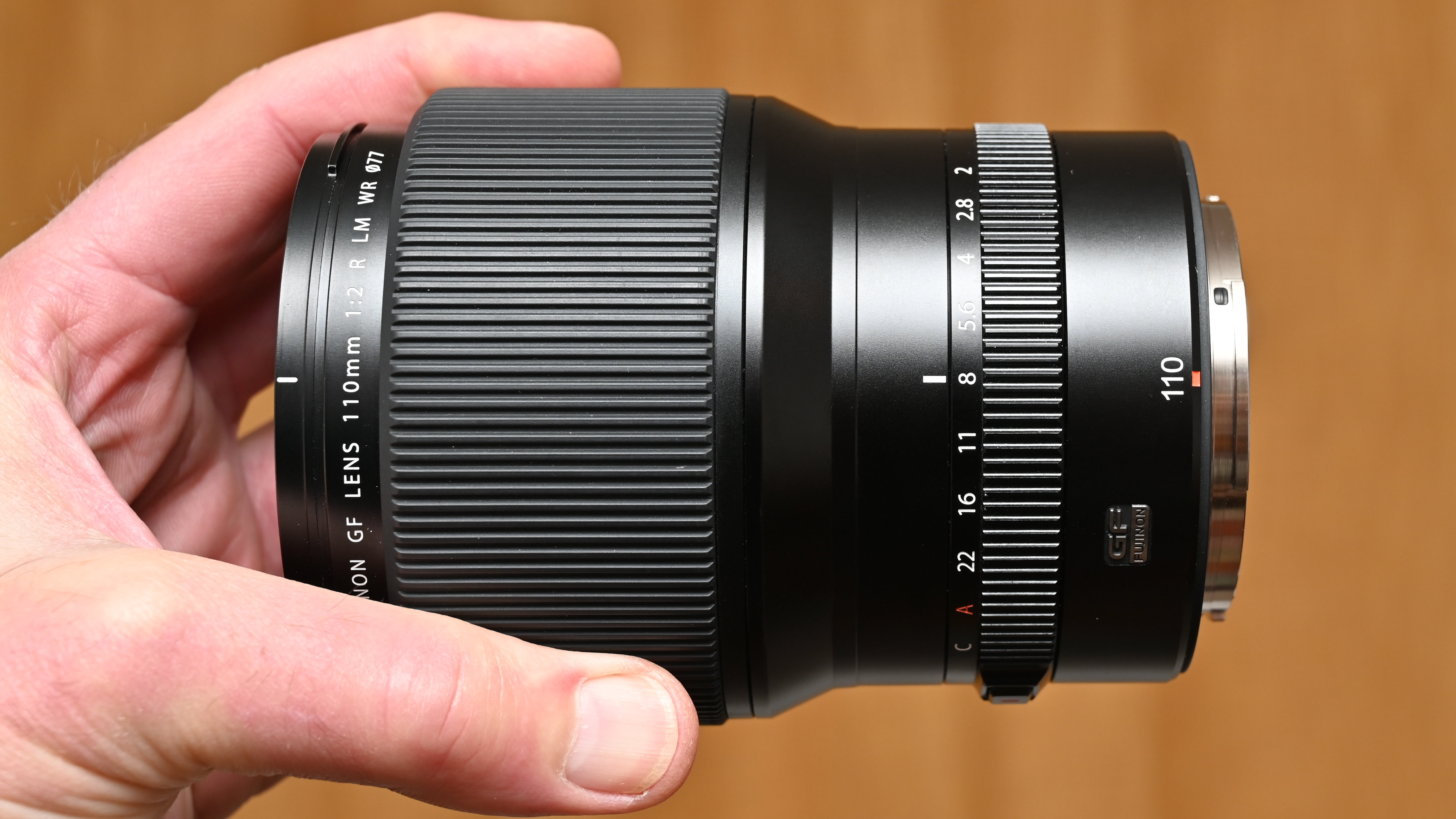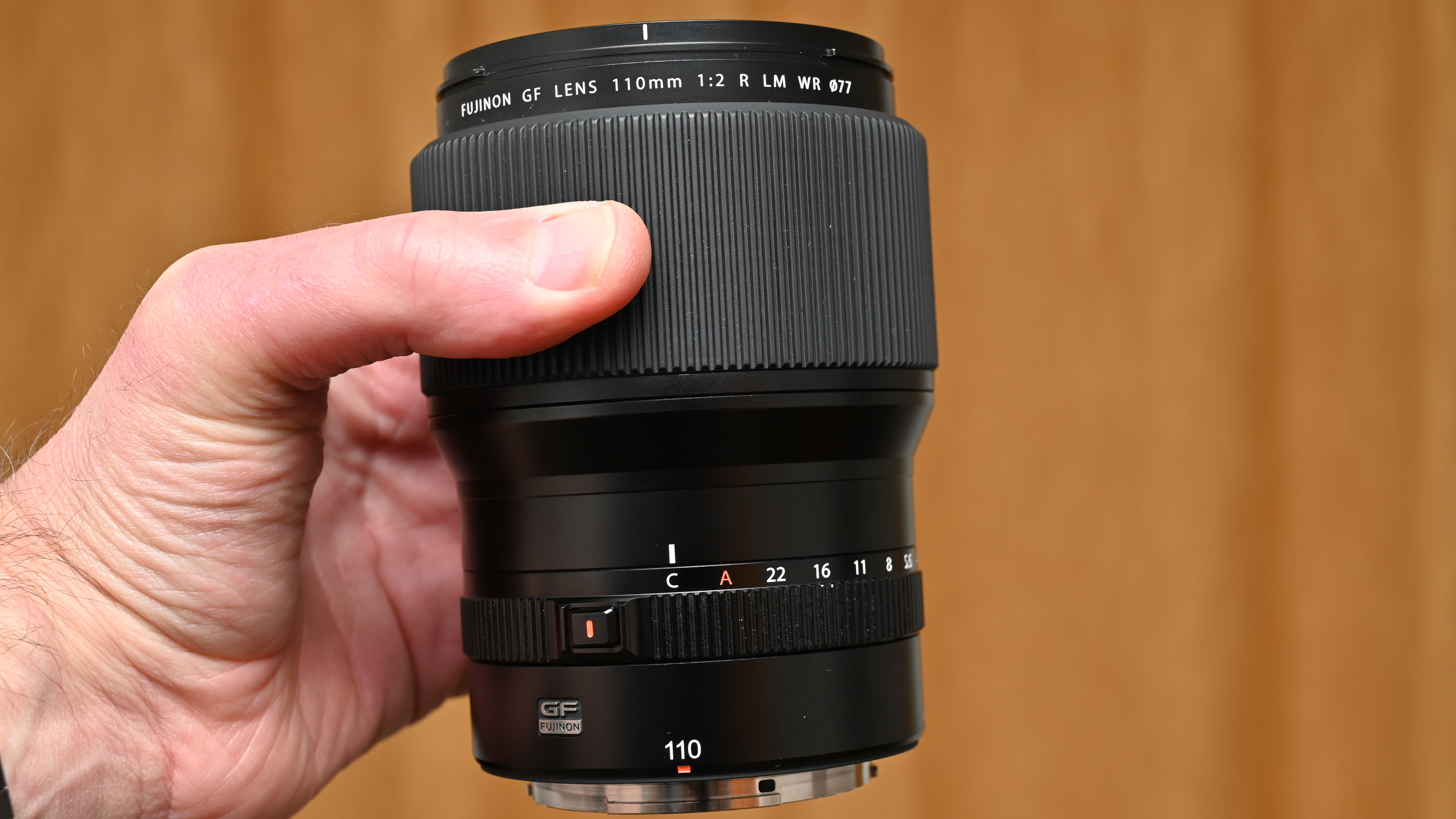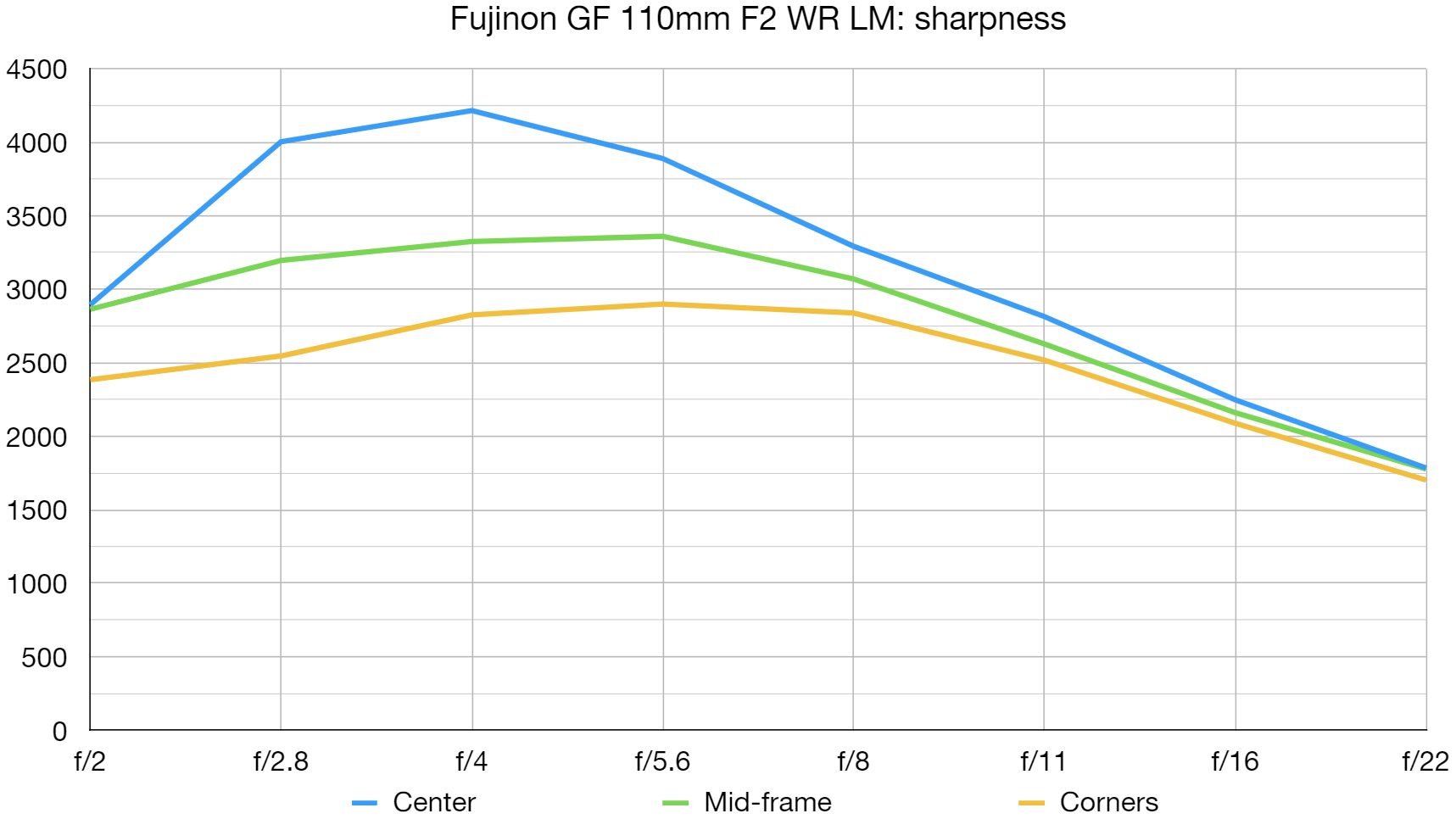
For portraiture with a full-frame camera, I tend to grab an 85mm fast prime, at least when I’m using a full-frame camera. And I’m certainly not the only one. The field of view is ideal for head-and-shoulders and half-length shots, so I can be close enough to engage with my subject, without invading their personal space.
The short telephoto focal length also gives a slight compression in perspective, which can be flattering. Designed for medium format Fujifilm GFX cameras, this 110mm lens gives an ‘effective’ 87mm focal length in full-frame terms, which is as near to 85mm as makes no difference.
With its ideal focal length and fast f/2 aperture, this lens aims to be not only the best portrait lens for GFX cameras, but one of the best Fujifilm GF lenses in the whole line-up, and a must-have lenses for the best Fujifilm cameras.

Fujifilm GF 110mm F2 R LM WR: Specifications
Fujifilm GF 110mm F2 R LM WR: Price & Availability
Launched back in 2017, the Fujifilm GF 110mm F2 R LM WR was one of the first GF lenses to come onstream and, at the time of writing this review in 2024, was priced at £2,599/$2,799 but has been widely discounted since.
For the sake of comparison, other GF telephoto lenses in the line-up include the Fujifilm GF 120mm F4 Macro R LM OIS WR at $2,699 / £2,499 / AU$4,199, the Fujifilm GF 250mm F4 R LM OIS WR at $3,299 / £2,799 / AU$4,399.
Fujifilm GF 110mm F2 R LM WR: Design & Handling
Using the Fujifilm GF 110mm F2 R LM WR, I’m reminded that depth of field is governed more by the ‘actual’ rather than the ‘effective’ focal length of a lens, taking the crop factor into account. The upshot is that I like the way this lens gives a perspective and depth of field that feel very similar to using an 85mm f/1.4 lens on a full-frame camera.
As such, it’s billed as a portrait lens and is similarly suitable for still-life photography. Indeed, action, sports, and wildlife photography are within its remit, and pretty much any scenario which requires a short telephoto focal length and a fast aperture for freezing movement with quick shutter speeds, as well as for gaining a tight depth of field.

It's the nature of the beast that medium format lenses are chunkier than equivalent full-frame lenses, and more especially than lenses designed for crop sensor cameras. The GF 110mm is a case in point, measuring 94x126mm and weighing in at 1,010g. That’s only 40g or about 1.4oz less than the Fujifilm GF 100-200mm F5.6 R LM OIS WR telephoto zoom lens but, while the latter is supplied complete with a tripod mounting ring, the GF 110mm has none.
Either way, I find it’s perfectly comfortable even for long periods of handheld photography. Typical of fast-aperture lenses, the GF 110mm also lacks the optical image stabilization of the ‘slower’ GF 100-200mm F5.6 zoom and Fujifilm GF 120mm F4 Macro prime.

The GF 110mm has quite a complex optical design for a prime lens, featuring 14 elements arranged in 9 groups. They include no less than 4 ED (Extra-low Dispersion) elements to enhance clarity and minimize chromatic aberrations. As usual with GF lenses, I like the aperture control ring, which enables a full range of hands-on adjustment from f/2 down to f/22, in one-third f/stop click steps. The lock release button is also handy for avoiding accidental nudging of the aperture ring when it’s in A or C positions, for controlling the aperture from the host camera body.

Rainy day portraiture might seem an odd mix but wedding and event photographers would disagree. When something’s firmly fixed in the diary, you have to crack on whatever the weather. As such, and again typical of GF lenses, the GF 110mm is extensively weather-sealed. The overall build quality feels very robust and solid.

Fujifilm GF 110mm F2 R LM WR: Photo Performance
For this type of lens, the quality of bokeh can be every bit as important as sharpness. The GF 110mm delivers on both counts. I tested the lens with a Fujifilm GFX 100 II camera body, and it was able to make good use of all 102 megapixels to give excellent sharpness even when shooting wide-open at f/2.
Meanwhile, the tight depth of field ushers in beautifully soft bokeh, along with a very natural-looking roll-off between focused and defocused areas within images. ‘Fast’ lenses with wide apertures are often prone to axial chromatic aberration, also called bokeh fringing. This can create color fringing around high-contrast transitions, just in front of or behind the plane of focus. The GF 110mm does well to keep this aberration to minimal levels.

Lateral chromatic aberration, which is more common towards the edges and corners of the image frame is also very well controlled, and there’s negligible distortion. All in all, image quality and all-round performance are superb. There’s no optical image stabilization but that’s fairly common in ‘fast’ primes, and the lens can make good use of IBIS (In-Body Image Stabilization) featured in all recent Fujifilm GFX cameras.
Fujifilm GF 110mm F2 R LM WR: Sample Images

The example images in the following gallery were taken in sunny conditions at Bristol Docks in the UK, using the lens with a Fujifilm GFX 100 II camera body.









Fujifilm GF 110mm F2 R LM WR: Lab Results
We run a range of lab tests under controlled conditions, using the Imatest Master testing suite. Photos of test charts are taken across the range of apertures and zooms (where available), then analyzed for sharpness, distortion and chromatic aberrations.
We use Imatest SFR (spatial frequency response) charts and analysis software to plot lens resolution at the center of the image frame, corners and mid-point distances, across the range of aperture settings and, with zoom lenses, at four different focal lengths. The tests also measure distortion and color fringing (chromatic aberration).
Sharpness:

This is quite possibly the sharpest lens we've ever tested! Center sharpness is simply awesome, particularly from f/2.8 through to f/8. The GF 110mm also retains superb sharpness across the whole image frame, right into the corners, even when shooting wide-open.
Fringing:

Color fringing is well controlled and remains of a low order right out at the edges and corners of the image frame, although lateral chromatic aberration can be very slightly noticeable at medium to narrow apertures.
Distortion: 0.44
There’s just the merest hint of pincushion distortion which will generally be very hard to spot in real-world images.
Fujifilm GF 110mm F2 R LM WR: Verdict
The Fujifilm GF 110mm F2 R LM WR is my pick of the entirely excellent GF crop for portraiture. The focal length and fast aperture make it simply the perfect tool for the job, but it’s equally adept at still life photography. Fast autofocus also makes the lens a strong contender for action, sports and wildlife photography. All in all, it’s a brilliant lens that combines scintillating sharpness with beautifully smooth bokeh.

Should you buy the Fujifilm GF 110mm F2 R LM WR?
✅ Buy this...
- Perfect for portraiture
- Gives a tight depth of field
- Great image quality and handling
🚫 Don't buy this...
- You don’t need such a fast aperture
- You’d rather have zoom versatility
- It’s beyond your price range







